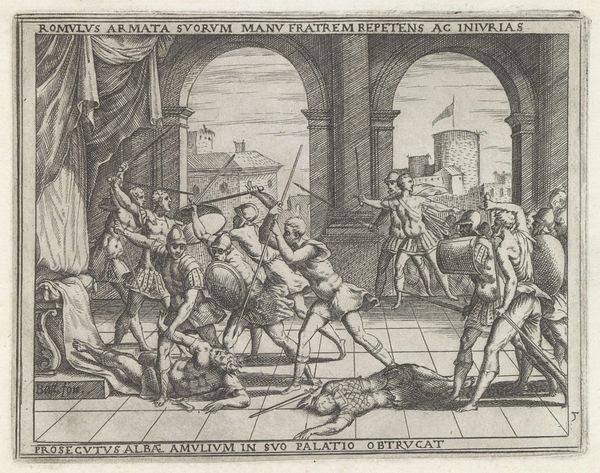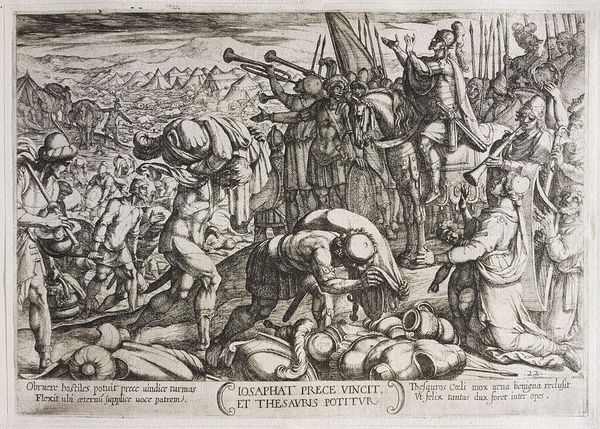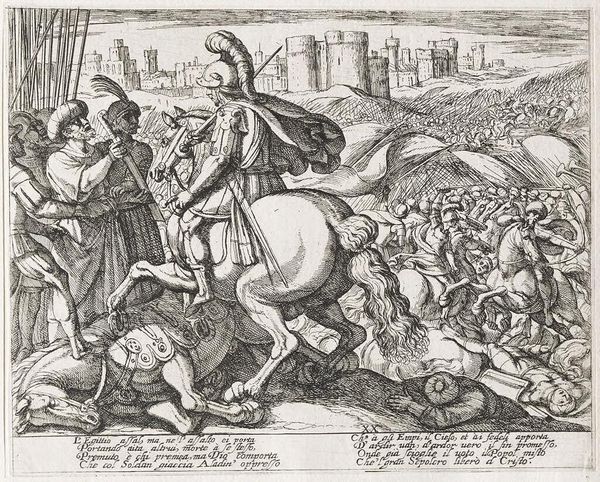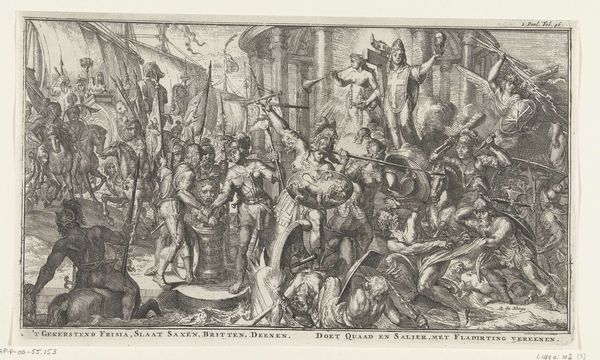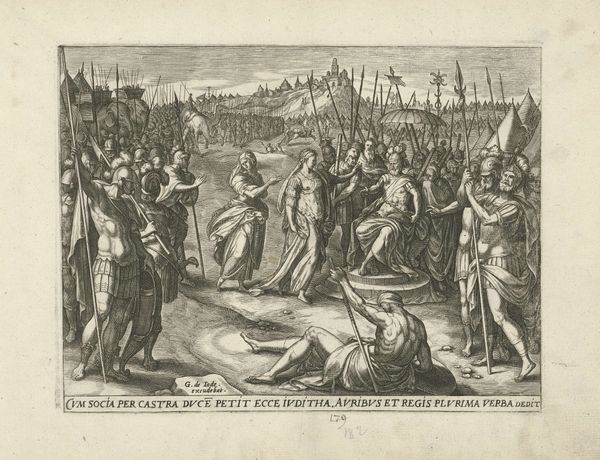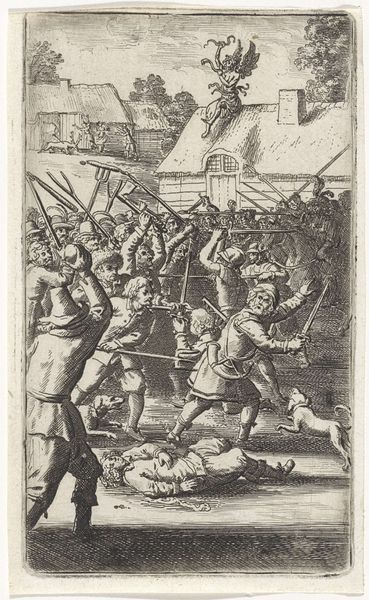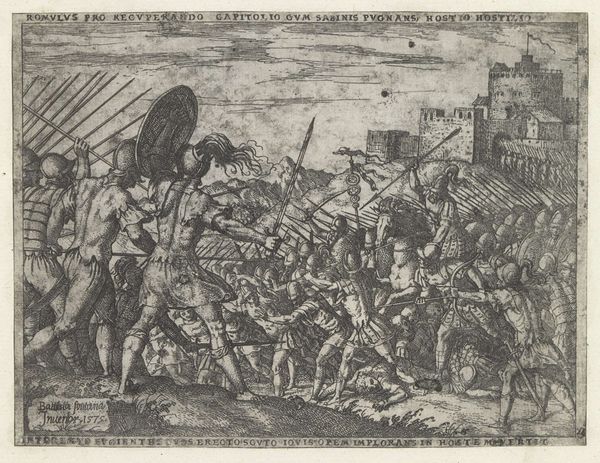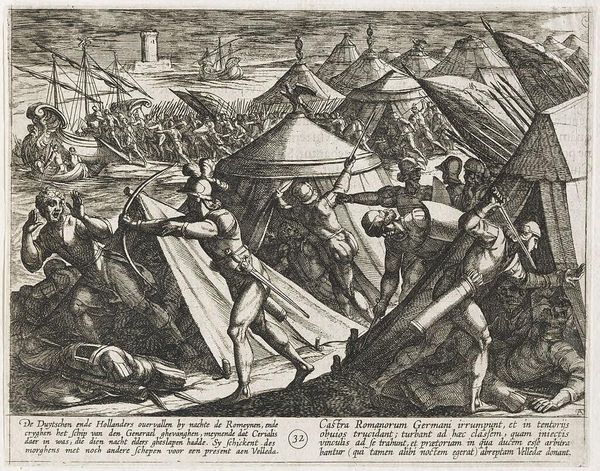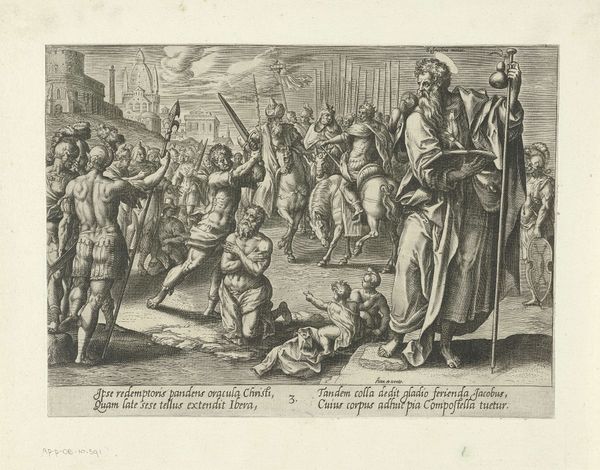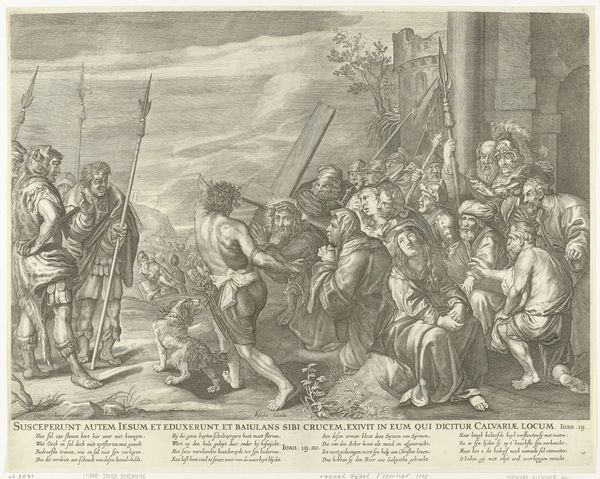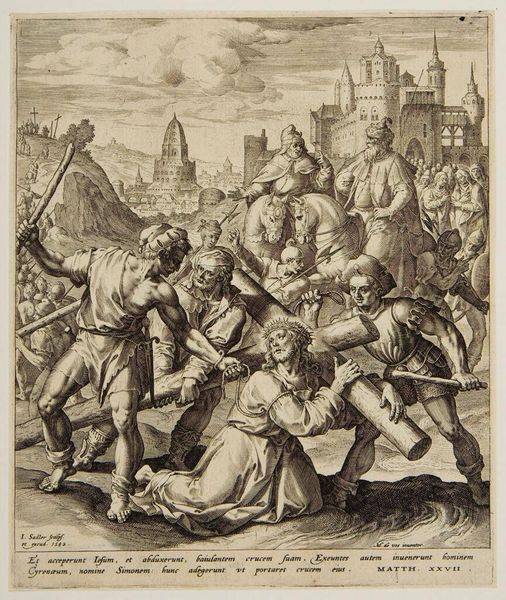
print, engraving
# print
#
pen sketch
#
mannerism
#
figuration
#
romanesque
#
line
#
history-painting
#
academic-art
#
engraving
Dimensions: height 136 mm, width 180 mm
Copyright: Rijks Museum: Open Domain
Curator: Look at the sheer dynamism in Giovanni Battista Fontana’s "Reconciliation between the Romans and the Sabines," created in 1573. Editor: Whew! It’s like looking at pure chaos. The first thing that hits me is this swirling mass of bodies, a tug-of-war between violence and, presumably, peace? The cross-hatching is insane. Curator: Indeed. This print, currently held at the Rijksmuseum, depicts the aftermath of the abduction of the Sabine women, a foundational myth for Rome. It uses engraving and line techniques typical of mannerism to represent a key moment of transformation. Editor: So, it’s supposed to be about reconciliation, right? But all I see are anguished faces and muscular guys ready to brawl. And what's up with the woman right at the center practically stepping on that fallen guy's head? Is she part of the reconciliation deal, or is she about to make things worse? Curator: Your skepticism is valid. The composition reflects the complex gender dynamics embedded within the story, with the Sabine women positioned as pivotal in mediating the conflict sparked by their abduction. They act as kin now on both sides, and this positioning between masculine aggression makes the point. Editor: That’s fascinating. But all that detail almost overwhelms the narrative. Each little line adds to the tension but it also sort of obscures the bigger picture. Do you think that tension speaks to the struggle inherent in forced reconciliation itself, the difficulty of erasing trauma with a handshake? Curator: Absolutely. By emphasizing that unresolved state, Fontana critiques simplistic notions of resolution, asking us to reflect on what’s suppressed or strategically forgotten in narratives of national unity. I wonder if Fontana was making comment on reconciliation, or peace in general, as a viable goal in times of upheaval. Editor: Mmm, okay, I'm seeing that. It's like, even in peace, there's violence clinging to everything, even their clothes. Food for thought. Thanks! Curator: Indeed, it challenges us to see beyond the surface, to interrogate power structures and lived realities masked by celebratory depictions of historical events.
Comments
No comments
Be the first to comment and join the conversation on the ultimate creative platform.
